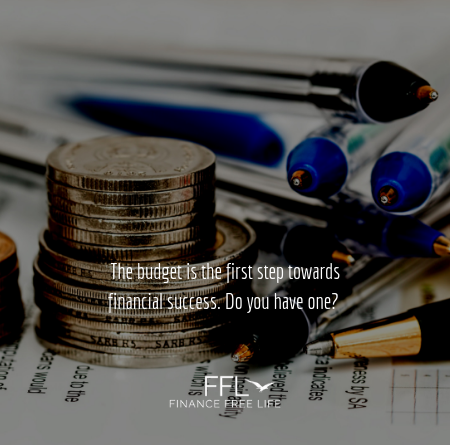Get Out of Debt Part 1: The Budget
Welcome to the new series, “Get Out of Debt”. Over the next month, we will dive into eight different steps to help you work towards getting out of debt. This week, we’ll talk about the first step towards getting out of debt – the budget. The family budget is the most important piece to financial health. It tells you where the money is going, and you can easily see where changes need to be made.
First, the why.
The first step towards any budget is understanding the why behind it. Look at your finances, and determine your reason for gaining control of your finances. Why is creating a plan important to you? For me, it was about gaining the freedom to spend money knowing it is planned for within the spreadsheet. For others, it may be getting out of debt. So, start with your motivation, your goal of the budget. This will keep you focused on the end goal when spending money.
Step by step.
To start a budget, you need to take it one step at a time. First, determine your monthly net income – after taxes with take-home pay. This is the base for your plan. Then, list out ALL of your expenses. When starting your first draft of the budget, it needs to be your current expenses, to see where you are spending and how you are spending it. Most banks have the ability to pull an Excel spreadsheet of your transactions, and you can choose the dates to pull from. Using this tool can give you a picture of your monthly spending habits.
Once you have your initial “draft” budget, you can then begin to analyze your spending. Use your draft budget, and determine what you want your finances to look like. Maybe this means cutting back on eating out, or increasing savings. Whatever the case is, make adjustments to the budget. Be sure to include ALL of your debt payments in this plan. If your budget comes up short, there are action steps you can take. Check out this post for some of our tips on balancing a short budget.
Live it out.
Now that you have a budget, it’s time to put it to action. This means living out what you said you would do on paper. There are many ways to ensure you follow your financial plan. Many people use a “cash envelope” system. This is where each budget category gets an envelope. On pay periods, or weekly, however you choose to do it, you take out enough cash to fill the pre-determined area. IE: If you planned to spend $400 a month on groceries, then you take $100 every week, or $200 a paycheck, and put it in the envelope. When the money is gone, the spending stops. We recommend this method for all those starting out on a budget. It is a great way to track, and a “fail-proof” method to prevent over spending.
There are other ways to do this same thing, including a debit card system, with multiple cards for each criteria. But do whatever works best for you.
On this initial financial plan, the “first draft” of your desired plan, we recommend living on it for one month before making any changes. Sometimes, the first round is not as accurate or successful as you would like, which is why we tell you to try it out for one month. After the first month, reconvene a finance meeting, and determine what went well and what needs to be improved.
Remember, the financial plan you wrote is an active document. It’s not something that’s a “set-it, forget it” system. It needs to be checked frequently, and changed as necessary when circumstances change.
How do you run your budget? What is your preferred method for financial planning? Stay tuned for part 2 later this week.

